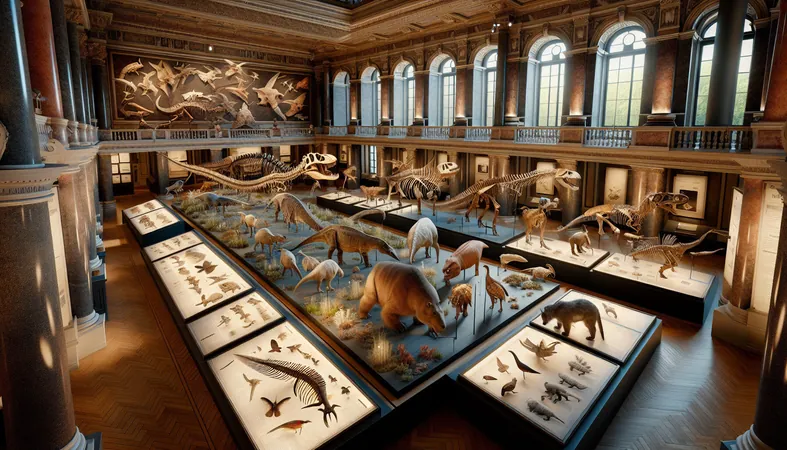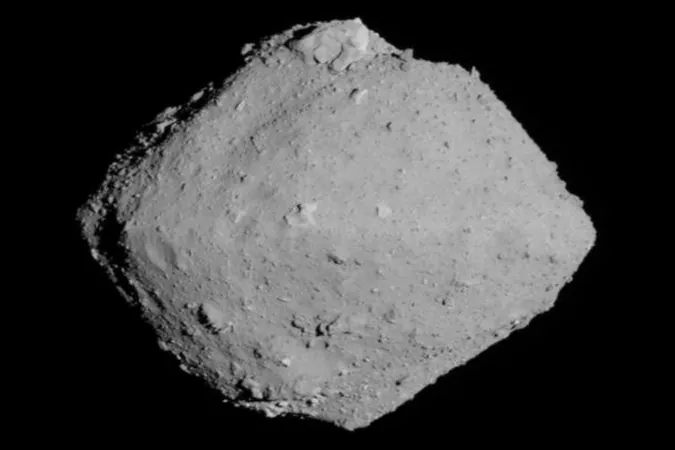
Unearthing 'Gnatalie': A 150-Million-Year-Old Dinosaur's Journey from Jurassic to Los Angeles
2024-11-18
Author: Rajesh
Unearthing 'Gnatalie': A 150-Million-Year-Old Dinosaur's Journey from Jurassic to Los Angeles
In a remarkable tale spanning 150 million years, the story of 'Gnatalie'—a long-necked dinosaur from the late Jurassic Period—has captivated paleontologists and dinosaur enthusiasts alike. Once roaming the lush landscapes of Laurasia, this gigantic herbivore is set to become a star attraction at the Natural History Museum of Los Angeles County.
A Glimpse into the Jurassic Era
Picture this: 150 million years ago, the Earth was a different place. Dense forests filled with towering conifers and exotic plants like monkey puzzle trees thrived under a humid climate. Amongst this vibrant ecosystem lumbered Gnatalie, a colossal creature weighing around 10 tons, with an elongated neck gracefully held parallel to the ground as it feasted on ferns.
While her existence was a testament to the dominance of dinosaurs, much remains unknown about her life. Researchers speculate that Gnatalie lived for around 30-40 years, but the exact circumstances of her demise—be it from predators, old age, or other natural causes—remain a mystery.
From Bones to Fossils: A Journey Through Time
As time progressed, nature concealed Gnatalie's remains beneath layers of sediment. This sediment would eventually become rock, preserving her bones for millennia. Underneath ancient rivers that once trickled across what is now North America, minerals seeped into the bones and replaced organic materials, turning her remains into remarkable fossilized impressions.
Fast forward to 2007, where a group of dedicated paleontologists in Utah stumbled across an unusual green fossil. Teaming with the Natural History Museum's Dinosaur Institute, led by renowned paleontologist Luis Chiappe, their excavations uncovered a bonanza of fossils, revealing not only Gnatalie but a trove of prehistoric creatures that once inhabited the region.
The Discovery of a New Species
Laboring through summers filled with gnats and relentless heat, the paleontologists slowly unearthed not just a collection of dinosaur bones, but an entirely new species. After meticulously assembling fragments and comparing them with known species, they proudly named the dinosaur 'Gnatalie,' in honor of the pesky insects that had become part of their excavation saga.
The excavation site became a treasure trove, revealing camarasaurs, crocodiles, and other dinosaurs that swam in ancient rivers. As every summer brought new finds, the museum prepared for Gnatalie’s momentous journey to California for further study.
Preparing for Fame: The Journey to Los Angeles
Upon her arrival at the Natural History Museum of Los Angeles County, expert preparators began the painstaking task of meticulously sorting through the collected bones. Many restorations were required to piece together what would become the world’s only green dinosaur skeleton.
In the workshop of Research Casting International in Trenton, Canada, the incredible transformation took place. Workers assembled Gnatalie's towering 75-foot frame, carefully incorporating both authentic fossilized bones and precise 3D-printed replicas.
A Dinosaur for the Ages
As 2024 dawns, anticipation builds for the grand reveal of 'Gnatalie' at the newly constructed NHM Commons expansion in Los Angeles. Officials even invited the public to participate in choosing her popular name—solidifying her connection to the city as a unique cultural icon.
With her head elegantly arched towards the entrance, Gnatalie is poised to greet visitors of all ages, ensuring that children gaze up in wonder, while history enthusiasts marvel at her significant role in the story of life's evolution on Earth.
As the opening date approaches, museum staff, paleontologists, and the public eagerly await the chance to catch a glimpse of this extraordinary dinosaur, whose bones echo the ancient whispers of a time long gone yet vividly alive in our imaginations. Gnatalie's saga is one not just of fossilization, but of connection—spanning eons to ultimately welcome curious minds to explore our planet's rich, prehistoric past.




 Brasil (PT)
Brasil (PT)
 Canada (EN)
Canada (EN)
 Chile (ES)
Chile (ES)
 España (ES)
España (ES)
 France (FR)
France (FR)
 Hong Kong (EN)
Hong Kong (EN)
 Italia (IT)
Italia (IT)
 日本 (JA)
日本 (JA)
 Magyarország (HU)
Magyarország (HU)
 Norge (NO)
Norge (NO)
 Polska (PL)
Polska (PL)
 Schweiz (DE)
Schweiz (DE)
 Singapore (EN)
Singapore (EN)
 Sverige (SV)
Sverige (SV)
 Suomi (FI)
Suomi (FI)
 Türkiye (TR)
Türkiye (TR)